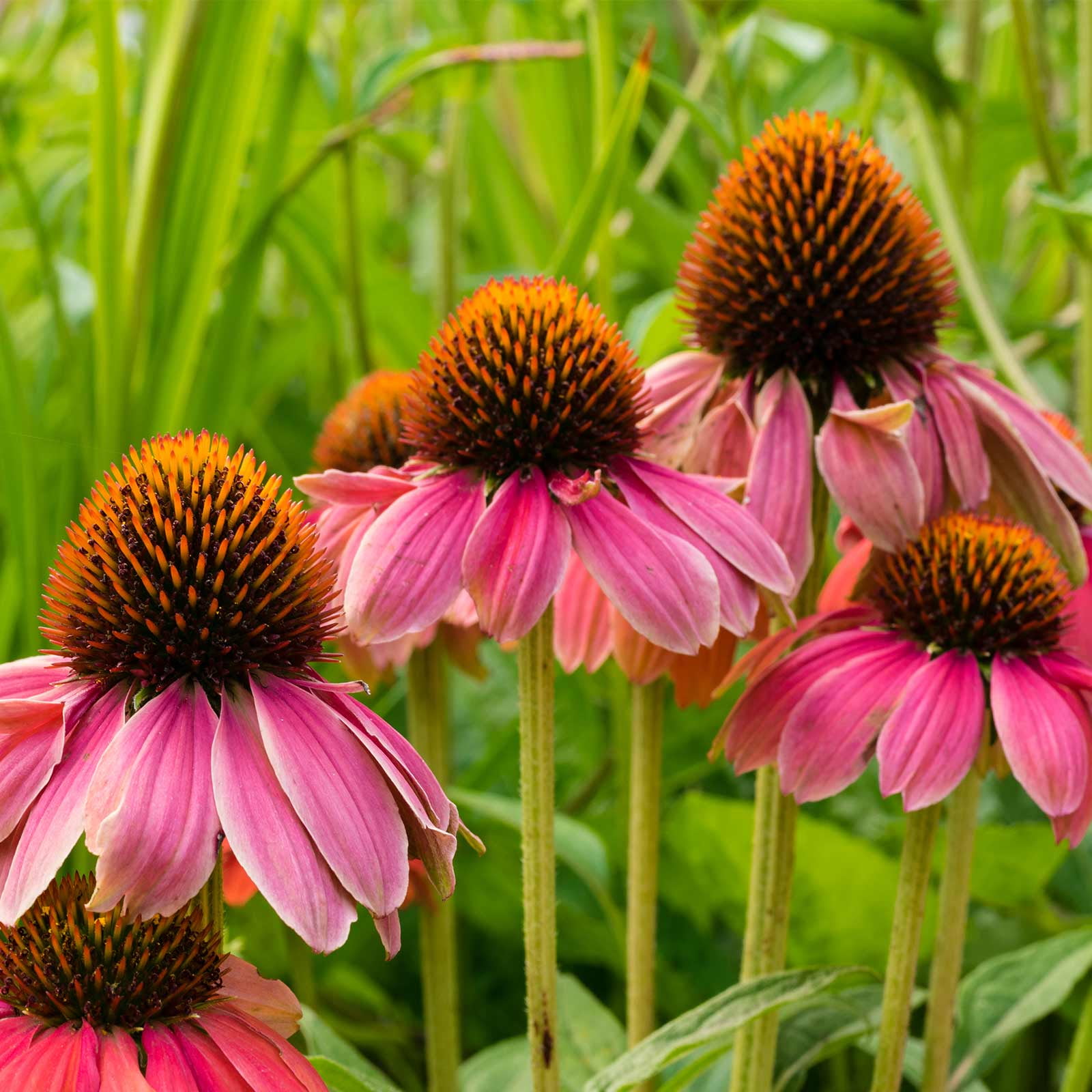
Seed Envelopes contain approximately 0.02 ounces of seed and cover about 5 to 10 square feet.

Usually reaches maturity 2 -3 growing seasons after planted, but can sometimes bloom the first growing season. Purple coneflower grows 1 to 3 feet tall. Flowers bloom in early summer, usually in June to July. Plant shallow, no deeper than 1/8 - 1/4 inch deep and lightly rake to work seed in. Purple coneflower has large, lavender flowers with a spiny, dome-shaped, orange or brown center. This large pink-to-purple daisy is a mainstay of all well-grown wildflower meadows, and is also a major colormaker in perennial borders. For years before it was a favorite of the herbal medicine industry, it was always one of the loveliest wildflowers on the plains. Purple Coneflowers Echinacea seeds produce plants that are long-blooming from July to October. A recent study published in The FASEB Journal concluded that chicoric acid exhibited anti-inflammatory effects in the central nervous system, which helped prevent neuron damage and cognitive deficits. Can also be planted in winter during natural freeze/ thaw cycles and early spring. Purple coneflower has large, lavender flowers with a spiny, dome-shaped, orange or brown center. This is the famous plains native called Purple Coneflower, but better known today by its botanical name: Echinacea. Purple coneflower is also beneficial in treating chronic inflammation, thanks to chicoric acid a natural phenol present in echinacea and chicory plants. Purple Coneflower is also cherished for its many medicinal uses.ĭirect sow seeds into prepared soil in late fall once soil temps are below 50 degrees (usually mid to late November). Once done blooming, you can snip spent blooms or leave for songbird food. Purple Coneflower is an herbaceous perennial in the Asteraceae (daisy) family that is native to central and eastern USA. They frequent Purple Coneflower in the fall to eat the seed. Ranging in height from 2 to 4 feet, this plant holds its bloom well throughout the growing season.Īttracts butterflies and other pollinators as well as hummingbirds and songbirds. This elegant echinacea produces large purple flowers with coppery centers a perfect choice for planting in groups, along border edges, or in containers great.

Purple Coneflower will grow just about anywhere when planted and it occurs naturally in a good share of the United States and eastern Canada.


 0 kommentar(er)
0 kommentar(er)
